First of all, it should be clearly stated that, although in the following lines we shall express our doubts concerning the authenticity of the so-called Gospel of Jesus’s Wife, our suggestions remain hypothetical until the ink of the document has been properly tested. Secondly, our analysis does not refer either to the figure of the historical Jesus, or to his marital status, which are beyond our field of expertise, but only to a literary fragment written in Coptic, whose identity is suspicious.
During the 10th International Congress of Coptic Studies, which took place September 17-22, 2012 in Rome, the Harvard Professor Karen L. King introduced to us a previously unknown Coptic papyrus fragment.
Her paper was delivered on Tuesday, September 18, from 7.00 o’clock P.M., in one of the rooms of the Patristic Institute ‘Augustinianum.’ We estimate that about 20 colleagues listened to her paper.
The text seems to be a dialogue between Jesus and the disciples, its most notable feature being, nevertheless, the fact that Jesus mentions his wife. In her presentation, Karen King already stated that there are some doubts concerning the authenticity of the fragment. In a paper she submitted for publication to the Harvard Theological Review, which she graciously made available on the Harvard Divinity School website, she wrote:
“Although the authenticity is not absolutely settled beyond any question, we are sufficiently confident to offer our results here. We anticipate that publication of the fragment at this stage will facilitate further conversation among scholar regarding the fragment’s authenticity, interpretation, and significance.” (King, p. 5)
We shall not summarize here the whole succession of events, which is quite well-known. Fresh updates can be found HERE, HERE, or HERE. Suffice to say that doubts concerning the document have been raised by several scholars since the very beginning. While some denied the authenticity of the fragment on paleographical grounds, others pointed out the inconsistencies of the text.
- Paleography and dating.
In her paper, Karen L. King mentioned that she asked Roger Bagnall (New York University) for a paleographical examination of the papyrus. After some initial doubts, Bagnall suggested that the fragment could be genuine after all:
“Bagnall, too, when he first observed the script judged it to be an unpracticed, messy hand, perhaps even by a modern forger, but on further observation and reflection concluded that the problem was the pen of the ancient scribe.” (King, p. 7)
A fourth century papyrus? How do we date Coptic literary manuscripts?
Aware that Coptic paleography is still a rudimentary science, King dated only tentatively the papyrus to the second half of the 4th century. Indeed, in the current state of knowledge, it is basically impossible to date most of the surviving Coptic literary manuscripts.
In order to establish the age of a given manuscript it is necessary that this is: A) either dated by colophon (which is rare), B) either to infer its date from archaeological context (dated documents reused to strengthen its bindings, datable artifacts, like coins or pottery, discovered together with the manuscript), or C) by comparison with other manuscripts which have already been dated through one of the two previous methods. Some scholars believe that comparison with similar datable Greek manuscripts can also be rewarding, but this method is quite subjective and not universally-accepted.
 PHOTO: Sample of a dated Coptic codex. The manuscript was completed on Parmoute 8, 571 Era of the Martyrs (= April 3, 855 A.D.).
PHOTO: Sample of a dated Coptic codex. The manuscript was completed on Parmoute 8, 571 Era of the Martyrs (= April 3, 855 A.D.).
Now, the earliest dated Coptic manuscript is the Pierpont Morgan codex M579, which was transcribed in the year 823 A.D. (i.e., the first half of the ninth century). Earlier than that, there are only a few instances in which Coptic manuscripts can be dated with some degree of confidence. One exception is the Nag Hammadi codex VII, in whose covers had been discovered three documentary papyrus fragments dated 341, 346 and 348 respectively. Consequently, these years must constitute the terminus post quem for the manufacture of the Nag Hammadi codex VII, or at least for its covers. Similarly, from the binding of Berolinensis Gnosticus 8502 (= BG 8502), which contains the Coptic version of the well-known Gospel of Mary, had been retrieved some papyrus scraps which some scholars dated to the late third or early fourth century. However, it seems that the binding was cut smaller and reused at a later date for the manufacture of the codex now in Berlin. As to the handwriting of the BG 8502, this was tentatively dated to the early fifth century but, again, without clear evidences. Finally, James Goehring found some resemblances between the lid of the jar in which the Nag Hammadi codices were discovered (today in the Schøyen collection) and a similar bowl from the early Roman period, unearthed in the Pachomian basilica at Pboou. From a typological point of view, such bowls can be dated to the fourth or fifth century A.D. If so, it provides us an approximate terminus post quem for the burial of the Nag Hammadi library.  Unfortunately, these are amongst the very few evidences which we possess for dating early Coptic manuscripts on more or less firm grounds. The aforementioned examples make clear how little we know about the age of the Coptic literary manuscripts we possess.
Unfortunately, these are amongst the very few evidences which we possess for dating early Coptic manuscripts on more or less firm grounds. The aforementioned examples make clear how little we know about the age of the Coptic literary manuscripts we possess.
Moreover, to conclude this issue, it is basically impossible to date the new fragment on paleographical grounds not only because Coptic manuscripts are usually hard to date, but also because it does not resemble any of the early Coptic manuscripts which are datable with some degree of confidence.
Is the handwriting ancient?
There is something striking in the script of the papyrus for anyone familiar with ancient Coptic manuscripts. First of all, the overall aspect of the document looks awkward. This is mainly due to the fact that the natural characteristics of writing (ductus) of an ancient scribe are lacking in our fragment. The letters are rough, some of them of an unusual shape, and they do not seem to come from the pen of someone who writes Coptic very often. Secondly, the copyist was very inconsistent in writing. Notable are the different shapes of the letters shai, omega, and epsilon. It has already been suggested in private discussions during the Coptological congress in Rome (by Christian Askeland, Victor Ghica, Alin Suciu and others) that the document was written with a brush instead of an scribal pen (calamus). We find at least one interesting example which supports such a hypothesis: on line 6, there is an epsilon where the marks of a brush seem visible.
 (SOURCE OF THE PHOTOGRAPH). The first enlarged letter is supposed to be an epsilon.
(SOURCE OF THE PHOTOGRAPH). The first enlarged letter is supposed to be an epsilon.
The fragment displays at least one interesting feature unknown among authentic Coptic manuscripts. On line 4, just before the words “Jesus told them,” there is an oblique stroke.
Although the function of this sign is unclear, it seems to indicate that a new sentence starts at that point. Its presence is even more unusual given that all other punctuation marks are completely lacking in the preserved portions of the text.
Our tentative conclusion after a first examination of the material is that the papyrus may be ancient but the handwriting possibly not.
2. The Content of the Text
The Gospel of Jesus’s Wife and the Gospel of Thomas
Already during our private conversations in Rome, it became obvious that any future discussion about the new papyrus fragment will be inextricably linked to the relationships between this document and the Gospel of Thomas. Francis Watson at the University of Durham was quick to point out important similarities with the Gospel of Thomas in lines 1-5 and 8 in GosJesWife. The Gos. Thom. parallel with line 7 was to our knowledge first pointed out by Päivi Vähäkangas (in private conversation on Facebook), and more recently by Mark Goodacre.
(The following text was converted to .JPEG format in order to preserve the Coptic fonts)
 From the above, it can be seen how closely GosJesWife is based on Gos. Thom. Moreover, as has been argued by Francis Watson, it is difficult to see how the text on the fragment could credibly be bound together as a continuous text using as few characters as would be provided by the presumably missing parts of each line of text, if this fragment were actually to derive from a literary codex.
From the above, it can be seen how closely GosJesWife is based on Gos. Thom. Moreover, as has been argued by Francis Watson, it is difficult to see how the text on the fragment could credibly be bound together as a continuous text using as few characters as would be provided by the presumably missing parts of each line of text, if this fragment were actually to derive from a literary codex.
In addition, the degree to which each line of the fragment gives us a clear sense unit, and nearly all of them carry an important message, both individually and collectively, is remarkable. We can, e.g., draw the following conclusions from each line of the fragment:
- 1. Jesus has received life from his mother.
- 2. Jesus is in a dialogue with his disciples.
- 3. The disciples argue that Mary is not worthy, or Jesus argues that Mary is worthy.
- 4. Jesus is married and has a wife.
- 5. Jesus states that [Mary] can become his disciple.
- 6. There are wicked people opposing Jesus.
- 7. Jesus lives together with his wife and tells his disciples why he does so.
The likelihood of finding a text like this on such a small fragment thus becomes a major question. Indeed, we welcome anyone to try to cut out a piece of this size from any literary codex from late antiquity and get a result that is as easy as this one to make sense of and interpret. Here, yet another feature of the fragment suggests that we might be dealing with a forgery.
In conclusion, both the physical appearance of the fragment, in particular its paleographical features, and its text give reasons for serious doubts concerning its authenticity.












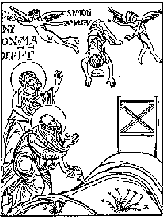




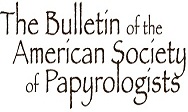
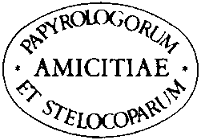
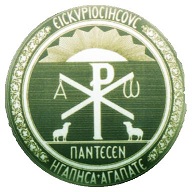





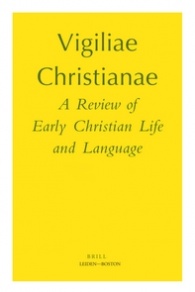






Reblogged this on Marius Cruceru and commented:
Iată primele reacții în text referitoare la “Evanghelia Soției lui Isus” din partea lui Hugo Lundhaug și din partea lui Alin Suciu.
Thanks. I’ve added this to our list at http://www.wifeofjesus.com
Pingback: Are Reports of the Death of the Gospel of Jesus’ Wife Greatly Exaggerated?
Thanks a lot Dr. Hany for this explanations.
Pingback: Papyrusfragment in zwaar weer | Γεγραμμένα
Dear friends, a few minutes ago my colleague informed me that your article today. I am very interested! I also published a Paleographical preliminary report on it (in Spanish) a couple of days … I hope it can be of interest to you. A second review will include (with your permission) the arguments considered relevant.
Here I leave the link to my article, if you also find something of interest that deserves to be referred to by you in an upcoming update of your article:
http://georgeosdiazmontexano.wordpress.com/2012/09/25/el-papiro-copto-sobre-maria-esposa-de-jesus-verdadero-o-falso/
Georgeos, I think your paper has some interesting suggestions.
Thank you Master! It’s a real honor … I need your permission to add-on a new update of my paleographical report, some of the issues that you have discovered so aptly. Of course that will indicate the exact references to your publications. My biggest concern is the Paleography,I do not go too far into the discussion of grammar (just a bit), it is not my specialty. A big hug friend.
Pingback: Perils of publishing (and my do-it-your-self guide to forgery)
If ‘shaf.eine’ is what was intended on line 6, would the result actually be ungrammatical? Could the prefix ‘mare’ at the beginning of the line not be read as a negation, as it is in Th31.2 (‘no physician’), 33.2 (‘no one’), 47.3 (‘no man/person’), and 76.3 (‘no moth … no worms’), so that the line could read ‘No man who is wicked brings …’? Sounds OK in English, but perhaps it’s impossible in Coptic?
Dear Michael,
Thank you very much for the brilliant remark. We discussed it in our most recent post.
You deserve full credit for being the first to realize that actually we do not have an imperative there, but rather a negative aorist!
Reblogged this on Heterodoxology and commented:
Coptic scholars are in a strange position compared to most other researchers of arcane and obscure corners of history: their field occasionally makes world-wide news headlines, especially when there is some text claiming something about a certain carpenter from Nazareth. Last week newspapers across the world announced that someone writing on a coptic some time possibly in the 4th century had insinuated that the carpenter might have had a wife. Sensational, but well: it turns out the papyrus fragment is most likely not authentic. Read more about the arguments in this excellent post by Hugu Lundhaug and Alin Suciu. (For the record – this is the first time I reblog anything, so bear with me).
Excellent post. I reblogged this on Heterodoxology (first time I make us of this WordPress function)
Yes, we have seen that, thank you very much!
Pingback: Alin Suciu – Hugo Lundhaug: An Interesting Dialectal Feature in the Gospel of Jesus’s Wife, Line 6 | Alin Suciu
Pingback: Scholarly investigations into the Gospel of Jesus’ Wife available online. | Near Emmaus
Dear Alin, I wrote already last week an assessment that I had sent around to colleagues in the field whose email address I had. I copy it down for you:
September 23, 2012
Gesine Robinson
Rebuttal of the presentation of a Gospel of Jesus’ wife
My objections to the claim of an ancient manuscript fragment and my reasons for regarding it a modern forgery are manifold:
1. Claiming to possess an ancient fragment without knowing its provenance is unfortunate enough, but without giving the current owner is highly suspicious.
2. Even the square format of the papyrus piece with its neat edges suggests that this, at best, is scrap-material, not a preserved manuscript fragment.
3. The papyrus itself may actually be ancient (though this cannot be determined by simply “carefully examining” it, as was maintained), since at least the vertical side gives a rather genuine impression, but the handwriting on the horizontal side is very different, especially with regard to the space between letters and between the lines.
4. On paleographical grounds, the handwriting cannot come from the 4th century; especially judging from the way the T is written, for instance; there is no resemblance to the other known 4th century texts.
5. Miraculously, there are always full phrases preserved, something that hardly happens on a small single fragment.
6. And amazingly, on this small piece there are, according to the editors, allusions not only to one but even to two of the more well-known non-biblical gospels, the Gospel of Mary and the Gospel of Thomas.
7. In terms of the language, only the simplest vocabulary is used and only simple constructions are employed, as if the writer were afraid to make a grammatical mistake.
8. Therefore, the rather rare phrase peje i±±±s+ (though frequently used in the Gospel of Thomas since we have to do there with a collection of Jesus’ sayings) is used even in both instances of speaking, instead of the form pejaF (+ pronominal/nominal object) + NCi + subject that is more common in dialogues or other literary texts. Here in the first instance one would expect something like pejau NIs+ NCi Nmaqhths, and in the second instance pejaF nau NCi i±±s+, or since Jesus answers the disciples, even aFouwvb= NCi Is+ pejaF nau je. It seems a cautious and perhaps unsure modern Coptologist was at work here.
9. In addition, even though in Coptic dictionaries sHime is used for “woman” and Hime for “wife,” Hime is almost never used in comparable literary texts, not for the wife of Adam, Jacob, or any other male figures.
10. In the 2nd century, a time for which the Greek original is presupposed, an author would never have let Jesus simply say, “my wife,” existent or not. Women were relegated to the household as soon as Christian communities ventured out into the public sphere. In case of a disciple married to Jesus, the author would perhaps have explained in a dependent sentence the married status, like “Mary Magdalene, my wife, . . .”. The plain phrase “my wife” betrays modern thinking.
Finally let me express how deeply saddened and troubled I am by the latest trend in manuscript research. There seems to be a new integrity problem, starting with Marv Meyer’s “no comment” (regarding the Gospel of Judas) to Jim Robinson who had worked tirelessly for openness in textual research, up to the newest and most blatant example in Rome. Again secrecy was used as a means to maximize the sensational effect. For this reason, everything was intentionally orchestrated in a way that assured this outcome. It appears that the opening up of the Harvard website and the arrival of the press at the same moment the introduction in Rome was given were coordinated to that end. I am concerned that henceforth new manuscript discoveries will be widely assessed by experts in the field as something that individual scholars can exploit for their own profit.
Scholarship always benefitted from letting colleagues know about current works, from having open discussions of individual research projects at conventions, or from peer reviews prior to publications – something that would have been very beneficial especially in this current instance. Instead it was chosen to hide information from peers and introduce something with so much fanfare and speculation that it surely has to be backtracked one day, just like the evaluation of the Gospel of Judas had to be reversed by the first editors.
Dr Gesine Robinson’s § 8 is very hard to read ; here is a picture with the Coptic text – “any and all mistakes are mine.” – : http://twitpic.com/b1p0wd.
(Thanks to all for your valuable papers and comments, here and there.)
Thank you very much. There was no other possibility to make the Coptic fonts visible.
Thank you so much for your gracious reply to my suggestion about line 6. If I may, I’d like to express an observation about the fragment itself (though I am no more a papyrologist than a Coptologist). It’s remarkable to me that the top cut of the fragment occurred almost exactly between lines on both recto and verso. It could happen, of course, but the probability seems quite remote. One would normally expect to find, I would think, that one side or the other had a top portion of its lettering cut off, or that the bottom portion of the previous line was visible. But to the naked eye that does not appear to be the case.
Also, the same word appears in line one on both sides.
Pingback: AEX Trader | Vaticaan: ‘Jezusfragment’ is nep
Pingback: Gesù ha una moglie? Ma è il solito vangelo di Tommaso…
Thanks. The article has been translated into Italian and published on the website Natidallospirito.com
Thank you!
Reblogged this on Thoughts, feelings&observations and commented:
Interesting stuff. If you’re into this sort of thing=)
Dear Alin, thank you very much. As some people ask me about more detail on the discovery, I have added the link to your page on mine. See below. I hope that is OK. Kind regards. Piotr
Sure, Piotr, no problem.
Since the comments on this blog entry are still ongoing, it may not be out-of-order for me to thank Stephen Goranson for adding his observation to my own. It seems to me that unless the supposed GJW dialogue is one in which Jesus talks a lot about his family and/or his childhood, the chances of ‘my-mother’ appearing in the same vertical position front and back of a leaf are virtually nil. The known frequency of that phrase in any NH or NT text won’t do it.
Pingback: Jesus’ Wife? Scholars Weigh In | Our Rabbi Jesus
Pingback: Jesus’ Wife? Scholars Weigh In (Updated 10/3) | Our Rabbi Jesus
Pingback: More Updates to the Gospel of Jesus’s Wife « Theo-sophical Ruminations
Georgeos Díaz-Montexano, “Mary, Jesus’ Wife. A IV Century Coptic Papyrus. True of False?” Translate by Dr. César Guarde from Barcelona University.
Originally published in Spanish on September 18th. We are proud to present this comprehensive paleographycal analysis of the recently “discovered” papyrus of the so-called “Golpel of Jesus’ Wife”.
Mary, Jesus’ Wife. A IV Century Coptic Papyrus. True of False?
Read: http://www.agonfilosofia.es/index.php?option=com_content&view=article&id=176&Itemid=15
Pingback: “Peter you’ve always been a hot temper…” The Gospel of Mary in Manchester (P.Ryl. 463) | Faces&Voices
Pingback: Eksegetiikka nörttitytön ammattialana | Nörttitytöt
Pingback: 2012 in review | Alin Suciu
Pingback: Nörttitytöt – Eksegetiikka nörttitytön ammattialana
Pingback: Le papyrus soi-disant de la “femme de Jésus” – Quelques questions… » Serge Cazelais
Pingback: Papirusul aşa-zisei "evanghelii a soţiei lui Iisus" - un fals ordinar
Pingback: Un cercetator roman a demontat un fals ordinar la Harvard: Asa-zisa “evanghelie a soţiei lui Iisus”. A hoax at Harvard University: the so-called Gospel of Jesus’s wife | Ziaristi Online
Pingback: Un cercetator roman a demontat un fals ordinar de la Harvard: Asa-zisa “evanghelie a soţiei lui Iisus”. A hoax at Harvard University: the so-called Gospel of Jesus’s wife | Ziaristi Online
Pingback: Un cercetator roman a demontat un fals ordinar de la Harvard: Asa-zisa “evanghelie a soţiei lui Iisus”. A hoax at Harvard University: the so-called Gospel of Jesus’s wife
Pingback: Ariel Sabar’s Veritas: Some First Reactions | Variant Readings